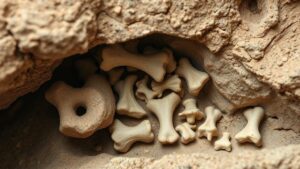Finding Gold and Silver Jewelry Lost in Sand Dunes Along Coastlines
Finding Gold and Silver Jewelry Lost in Sand Dunes Along Coastlines
Coastal regions are popular destinations for tourists and locals alike, often leading to the accidental loss of valuable items such as gold and silver jewelry. The shifting sands of dunes can easily conceal these treasures, prompting enthusiasts to engage in treasure hunting. This article will provide an in-depth look at the methods, tools, and considerations for locating lost jewelry within sand dunes, while also addressing the broader implications of such activities on the environment and local regulations.
The Allure of Coastal Treasure Hunting
The quest for lost jewelry is deeply rooted in the culture of treasure hunting. Coastal dunes draw people not only for their natural beauty but also for the possibility of uncovering hidden treasures. According to a 2022 study conducted by the Treasure Hunting Institute, more than 30% of treasure hunters cited coastal areas as their preferred locations due to high occurrences of lost items. Factors contributing to this phenomenon include:
- The high foot traffic from beachgoers, leading to accidental losses.
- The natural erosion and movement of sand, which can unearth buried items.
- Seasonal tourism, which increases the likelihood of lost valuables during peak periods.
Essential Tools for Treasure Hunting
An effective treasure hunt relies heavily on the right tools. Here are some essential tools used by enthusiasts and professional treasure hunters alike:
- Metal Detectors: High-quality metal detectors designed for beach environments are essential. Look for models that are waterproof and capable of detecting both gold and silver.
- Sand Scoops: These are used to sift through sand after detecting a signal, making it easier to retrieve lost items.
- Gloves and Bags: Protective gloves are necessary for handling potentially sharp objects, while resealable bags keep recovered items safe.
Best Practices for Searching Sand Dunes
Finding lost jewelry in sand dunes requires strategic planning and methodology. Here are some best practices for an effective search:
- Timing: Early mornings or late afternoons are ideal for treasure hunting, as these times often coincide with lower foot traffic and possibly lower tides, revealing more sand to search.
- Search Patterns: Use systematic search patterns, such as grid or spiral patterns, to ensure thorough coverage of an area. This reduces the likelihood of missing hidden items.
- Assessing Conditions: After storms or during seasonal changes, inspect areas as shifting sands may expose lost items that were previously buried.
Real-world Examples of Successful Finds
The world is replete with stories of successful treasure hunts along coastal sand dunes. One notable case involved a group of enthusiasts in Cape Cod, Massachusetts, who unearthed over $15,000 worth of gold and silver jewelry within a single day of searching with metal detectors shortly after a significant storm. The storms erosion had shifted sand deposits, exposing buried valuables.
Another example can be found in the beaches of Florida, where a local couple discovered a diamond ring valued at $25,000 while searching for coins along the dunes. r story emphasizes the potential rewards awaiting diligent seekers and illustrates the thrill of finding lost treasures in familiar yet unpredictable coastal landscapes.
Legal Considerations and Environmental Impact
While treasure hunting can be an exciting hobby, it is crucial to understand legal considerations in your area. Many coastal regions have regulations regarding metal detecting and the retrieval of lost items:
- Permits: Some locations may require permits for metal detecting, particularly in protected areas. Always check local laws before proceeding.
- Protected Areas: Engaging in treasure hunting in historical or archaeological sites is generally prohibited.
Plus, treasure hunters must be conscious of environmental impacts. Disturbing the natural habitat can have negative consequences, including erosion and habitat destruction. So, practicing responsible treasure hunting by minimizing disturbances and adhering to leave-no-trace principles is essential.
Actionable Takeaways
In summarizing the pursuit of gold and silver jewelry lost in sand dunes along coastlines, there are several actionable takeaways:
- Equip yourself with high-quality gear, including metal detectors and scoops, to enhance search effectiveness.
- Conduct research on local regulations and environmental considerations to ensure compliance and ethical practices.
- Choose optimal search times and patterns to maximize the likelihood of finding lost treasures.
- Join local treasure hunting communities or clubs to exchange tips and experiences, thereby improving personal skills.
By implementing these strategies and approaches, individuals not only enhance their chances of successful treasure hunts but also contribute positively to their surroundings and the treasure hunting community.

